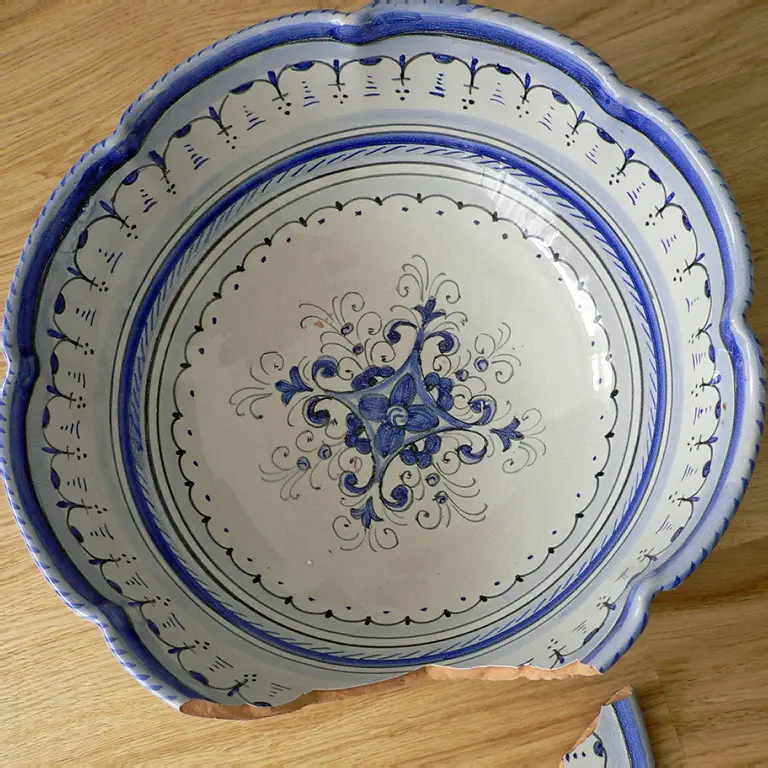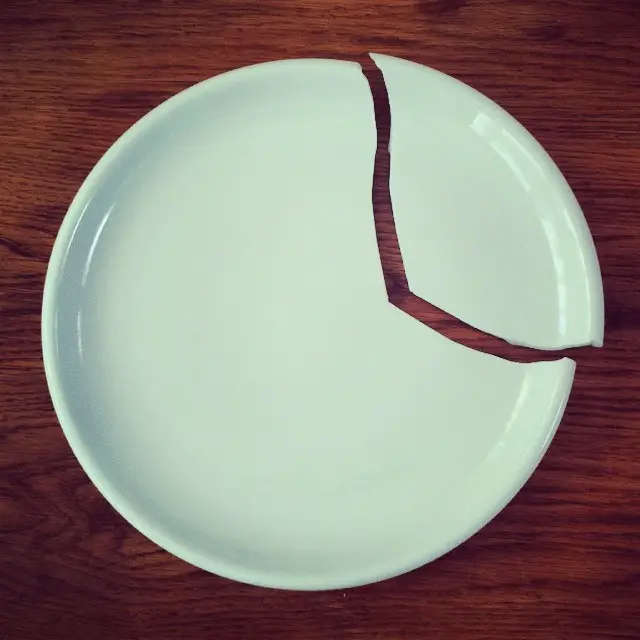Do you have many ceramic plates in your dish rack and would like to dispose of them? Fret not! This article teaches you some of the best ways you can apply to dispose of ceramic plates.
Ceramic plates are usually made of clay heated under temperatures. After being subjected to high temperatures, it is glazed to make something with unique qualities. Ceramic plates are resistant to scratch, non-porous, and can’t be defamed easily. That being said, you may have ceramic leftover plates and are looking for the best way to dispose of them.
This article explains the best way to dispose of these plates safely. Common ways to dispose of ceramic plates include donating, selling, repurposing, throwing them in the trash can, taking them to the local waste authority, or taking them to the recycling centre.
Why Is It Necessary to Dispose of Ceramic Plates Properly?
As mentioned earlier, you should know that ceramic plates are made through a series of processes that makes them versatile and durable. Heating at high temperatures tempers clay used to make ceramic plates, meaning it does not break easily when disposed of.

Ceramic plates are also relatively heavy, meaning it’s not easy to disintegrate into the dirt and be decomposed by microorganisms. Since ceramic plates cannot break down like other materials such as wood, they can stay where they are disposed of for more than 100 years.
If the amount of ceramic plates deposited is high, you will take up more space than you would have used for another purpose. Also, you will have to think of a way to dispose of these ceramics daily, meaning you will have a huge pit of non-disintegrable waste products.
With all the best features posed by ceramic plates, it is hard to dispose of them safely; hence you need the best ways to do that.
How to Dispose of Ceramic Plates – 6 Ways
The following are some of the easiest and safe ways to dispose of ceramic plates you need:
1. Professional Recycling
This option is applied if your local recycling plant does not do ceramic recycling. You need to search for other relevant recycling plants near your city. Most cities have numerous recycling facilities, and you will be sure to find one that deals with ceramic products, unlike other recycling programs.
You can search for a relevant recycling plant in your city by recycling websites or scrolling through your phone’s list of available recycling centres. If you are using the website, you can search through various options and choose the one dealing with ceramic products. You can reach out to them and dispose of your ceramic plates quickly.
Before choosing a certain recycling facility, ask about their services, as they may not match your demands. For instance, a recycling facility may deal with construction materials such as ceramic tiles, sinks, and toilets but not kitchenware like ceramic plates.
After confirming what the recycling facility deals with, bundle your ceramics in a foam wrap or newsprint (for broken ceramic plates) to prevent injuries. The recycling facility will grind your ceramic plate deposits and convert them into more valuable insulation materials, such as aggregates.
2. Donating Them
If your ceramic plates are not broken but you want to dispose of them safely, the best way is to donate them to your friends, relatives, or thrift shops since they can still be used for serving. Do not always choose to throw away your ceramic plates, especially if you no longer need them and they are in their best state.
Reach out to your friends, neighbors, or relatives who may need them. Let them see your collection, choose what they need then you can choose what to do with others that can’t be used.
The thrift shop also provides a better way to dispose of your ceramic plates. It is the best and safest way to dispose of your ceramic plates. Thrift shops mainly deal with second-hand or good products that others can still use.
After selling these second-hand goods, the funds are mainly used to manage charity organizations. Before taking your ceramic plates to a thrift shop, ensure they are in good condition. Thrift shops are not dumping grounds for your trash; hence you should opt for other disposal methods if the ceramic plates are broken.
3. Repurposing Them
This is the best disposing option if your ceramic plates are damaged. When the plates are too damaged that you can’t sell them or donate them to thrift shops, you can upcycle them and use them for another purpose.
You can use numerous DIY ideas to turn your damaged ceramic plates into something useful. Since ceramic plates are available in various designs and features embellishments, you can use the following ways to repurpose them into better products:
- Assemble all the broken parts of the ceramic plates and spread them on a flat surface. This provides a multicolored feature that you can use to decorate your empty walls.
- Instead of using marble stones or other materials for your flower vase, use broken ceramic chards to make it mosaic.
- Use partly broken ceramic plates to store small products such as pens, razor blades, paper clips, or craft supplies.
- Grind your ceramic plates into smaller particles, glue them onto your tabletop and grind them to make a mosaic finish.
- Glue the broken parts into your picture frames or mirror walls to create a spectacular view of your house.
4. Sell or Exchange Them
If you have numerous usable ceramic plates and want to dispose of them while getting some money, consider selling them. You can invite your friends, neighbors, or relatives and tell them about your plan and see if they are interested. If not, you can sell them to a garage at a lower price.
5. Call Local Waste Authority
Look for contact information for your local waste authority, which is responsible for managing trash collection and recycling programs in your area. Some authorities require you to wash all the ceramic waste plates before they accept them. You may also be required to pay some fee.
6. Throwing Them in the Trash Bin
If any of the above disposal methods don’t suit you or the amount or the number of ceramic plates you want to dispose of are few, throwing them in the trash bin is the simplest. Before that, pack them in a plastic bag to prevent the broken prices from spreading and falling off the bin. Label the bags, so the trash collection authority knows what to do with them.
Why Most Recycling Centers Don’t Accept Ceramics?

Mots recycling centres will accept glass chards for recycling but not ceramic plate waste products. This is because most ceramic plates feature recyclables, which will lower the quality of the recycled products.
Some people sneak ceramics with glassware into such recycling centres, affecting the quality of products produced. This leads to significant losses. Therefore, these industries are against ceramics.
Things to Prevent While Disposing of Ceramic Plates
- Do Not Burry Them in the Soil
Ceramics are durable and although there are ways a chance that they will decompose, it takes a long time; hence they may end up being a landfill.
- Do Not Burn the Ceramics
Burning ceramics produces toxic gases such as CO2 and CO that pollute the environment and pose a risk of respiratory complications.
Verdict
Ceramic plates are made from baked clay soil. They are durable and versatile. That means these dishes can last a long time while maintaining their original shape and design under excellent care. When it’s time to dispose of them, the best way is to sell, donate, repurpose, or take them to the recycling centre.
My name is Ella Vicedomine and I’m the founder of this blog. The aim is to start this informational blog to guide people on how to dispose of waste things around in the house but in the right way.


